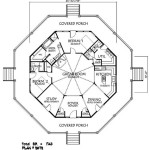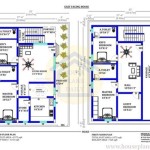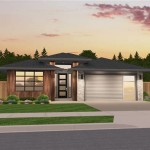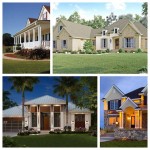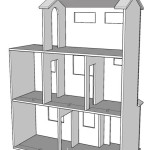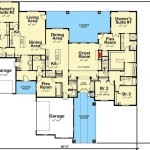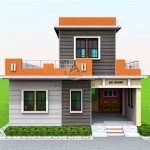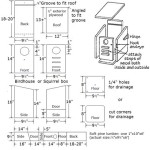3 Bedroom House Plans: Design Your Dream Homestay
The demand for unique and comfortable accommodation options while traveling has fueled the popularity of homestays. A well-designed three-bedroom house can serve as an ideal homestay, offering ample space for families, small groups, or individual travelers seeking a home-like environment. Careful planning and consideration of guest needs are essential when designing a three-bedroom house specifically for homestay purposes. This article will explore key factors and considerations in creating effective three-bedroom house plans for a successful homestay business.
The process of designing a three-bedroom house plan for a homestay goes beyond simply creating a residential layout. It necessitates a blend of architectural design principles, understanding of target demographics, and a pragmatic approach to functionality and operational efficiency. The design has to appeal to potential guests, offer a comfortable and memorable experience, and simultaneously minimize the operational burden on the homeowner. This requires a structured approach, focusing on spatial allocation, material selection, and the integration of essential amenities.
Optimizing Space and Layout for Guest Comfort
One of the primary considerations in designing a three-bedroom homestay is the effective use of space. The layout needs to prioritize guest comfort and privacy while ensuring convenient flow and accessibility. Each bedroom should ideally be designed as a self-contained unit, offering adequate space for sleeping, storage, and personal activities. The inclusion of en-suite bathrooms for each bedroom significantly enhances guest satisfaction and privacy, reducing the potential for conflicts and enhancing the overall experience. However, if budget constraints exist, consider a minimum of two bathrooms, strategically located for convenient access from all bedrooms and common areas.
Beyond the bedrooms, the design must incorporate common areas that encourage interaction and relaxation. A spacious living room with comfortable seating is crucial, providing a space for guests to socialize, watch television, or simply unwind after a day of exploring. The dining area should be sufficiently sized to accommodate all guests comfortably, whether it's a formal dining room or an open-plan layout integrated with the kitchen. The kitchen itself should be designed for functionality, equipped with modern appliances that allow guests to prepare their own meals. Consider including a breakfast bar or island for informal dining and additional counter space.
Furthermore, incorporating outdoor spaces can greatly enhance the appeal of a homestay. A patio, deck, or balcony offers guests the opportunity to enjoy the surrounding environment, relax outdoors, and perhaps even barbecue. Landscaping can further contribute to the aesthetic appeal and create a welcoming atmosphere. Consider incorporating features such as a well-maintained garden, a seating area under a pergola, or a small water feature. These additions not only enhance the guest experience but also increase the perceived value of the property.
Accessibility is another crucial factor to consider. If the property is intended to cater to guests with mobility limitations, ensure that the design incorporates features such as ramps, wider doorways, and accessible bathrooms. Compliance with accessibility standards is not only legally required in many jurisdictions but also demonstrates a commitment to inclusivity and caters to a broader range of potential guests.
Material Selection and Durability
The selection of materials plays a critical role in the longevity and maintenance of a homestay property. Given the increased wear and tear associated with frequent guest turnover, it is essential to choose durable and easy-to-clean materials throughout the house. Flooring options such as tile, laminate, or engineered hardwood are generally more resistant to scratches, stains, and moisture compared to carpet. Walls should be painted with washable and stain-resistant paint, allowing for easy cleaning and maintenance. Furniture should be chosen for both comfort and durability, opting for pieces made from robust materials that can withstand frequent use.
In the bathrooms, select fixtures and finishes that are resistant to water damage and mold growth. Tile flooring, waterproof grout, and moisture-resistant cabinetry are essential. Consider installing shower doors instead of curtains to minimize water spillage and mold buildup. In the kitchen, choose countertops made from durable materials such as granite, quartz, or stainless steel. These materials are resistant to heat, scratches, and stains, making them ideal for a high-use environment. Also, stainless steel appliances are easier to clean and maintain compared to other finishes.
The exterior of the house should also be designed with durability in mind. Choose siding materials that are resistant to weather damage, such as vinyl, fiber cement, or brick. The roof should be constructed from durable materials such as asphalt shingles, metal, or tile. Regular maintenance, such as cleaning gutters and inspecting the roof, is essential to prevent water damage and prolong the lifespan of the property.
Sustainability is an increasingly important consideration for travelers. Incorporating eco-friendly materials and design features can not only reduce the environmental impact of the property but also attract environmentally conscious guests. Consider using recycled materials, energy-efficient appliances, and water-saving fixtures. Installing solar panels can further reduce energy consumption and lower operating costs. Implementing sustainable practices can enhance the appeal of the homestay and contribute to a positive image.
Integrating Essential Amenities and Technology
Modern travelers expect a certain level of comfort and convenience when choosing accommodation. Equipping the three-bedroom homestay with essential amenities and technology can significantly enhance the guest experience and increase its competitiveness. High-speed internet access is a must-have, allowing guests to stay connected, work remotely, and stream entertainment. Providing a dedicated workspace in at least one of the bedrooms can cater to business travelers and remote workers.
A well-equipped kitchen is another essential amenity. Guests appreciate the ability to prepare their own meals, whether it's a quick breakfast or a full dinner. The kitchen should include a refrigerator, stove, oven, microwave, dishwasher, and a range of cooking utensils and cookware. Providing basic pantry staples, such as coffee, tea, sugar, and spices, can further enhance the guest experience. Consider including a welcome basket with local snacks and beverages to create a positive first impression.
Entertainment options are also important. A television with access to streaming services can provide entertainment during downtime. Consider providing a selection of books, games, or DVDs to cater to different interests. A sound system can enhance the ambiance of the property and allow guests to enjoy their favorite music. Smart home technology can further enhance the guest experience, such as smart thermostats, smart lighting, and smart locks. These features can provide convenience, security, and energy efficiency.
Security is a paramount concern for travelers. Installing security cameras, smoke detectors, and carbon monoxide detectors can provide peace of mind. Consider using a smart lock system that allows guests to access the property using a unique code, eliminating the need for physical keys. Providing clear instructions on how to operate appliances, access Wi-Fi, and use other amenities is also essential. Creating a welcome packet with information about local attractions, restaurants, and transportation options can further enhance the guest experience. Clearly communicating house rules and policies is crucial to managing expectations and preventing misunderstandings.
By carefully considering the spatial layout, material selection, and integration of essential amenities and technology, homeowners can create three-bedroom house plans that are ideally suited for a successful homestay business. The key is to prioritize guest comfort, convenience, and security while minimizing operational burden and maximizing the property's appeal. A well-designed homestay can provide a memorable and enjoyable experience for guests, contributing to positive reviews, repeat bookings, and a thriving business.
5 Perfect Lifestyle House Plans For Your New Home

Homestay Free Online Design 3d House Ideas By Planner 5d

25 More 3 Bedroom 3d Floor Plans

22x31 House Plan 682sq Ft Design P17a Architect9 Architect In Haldwani

Simple 3 Room House Plan Pictures 4 Nethouseplans

30 Fantastic 2d Floor Plan Ideas Engineering Discoveries

5 Cent 3 Bedroom Budget Home Design With Free Plan

3 Bedroom Prefabricated Insulated Prefab Container Folding House Mobile Poland Warehouse New York Office Made In China Com

Thailand Portable Cabin Prefab 3 Bedroom House Floor Plans Modular Home 50k Container Made In China Com

25 X 50 3 Bedroom House Plans Plan Files
Related Posts

